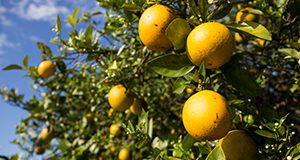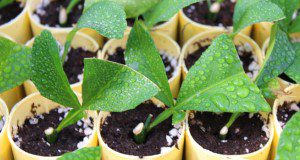Commercially grown citrus trees are usually composed of two parts: 1) the scion, which is the aboveground portion of the tree that produces the fruit, and 2) the rootstock, which comprises the root system and the lower portion of the trunk. This new 4-page publication, chapter 6 of the forthcoming Citrus Nursery Production Guide, discusses three kinds of rootstock propagation: seed, cuttings, and tissue culture. Written by Ute Albrecht, Lorenzo Rossi, and Mongi Zekri and published by the UF/IFAS Horticultural Sciences Department.
https://edis.ifas.ufl.edu/hs1329
Tag: rootstock
Citrus Production Guide: Rootstock and Scion Selection
 When preparing for replanting, an important factor to consider is the choice of rootstock. Choosing the right rootstock and scion combination can result in higher economic returns without any additional cost. Rootstocks affect scion vigor, yield, fruit size, juice quality, and pest tolerance. However, tree growth, yield, and fruit quality interact strongly with climate, soil type, tree spacing, and other factors, often producing contradictory reports on rootstock performance in different areas. This 3-page fact sheet discusses soil characteristics, rootstock effects on pests and diseases, tree spacing and size, and rootstock/scion combination. Written by Ute Albrecht, Fernando Alferez, and Mongi Zekri, and published by the UF/IFAS Department of Horticultural Sciences, September 2017.
When preparing for replanting, an important factor to consider is the choice of rootstock. Choosing the right rootstock and scion combination can result in higher economic returns without any additional cost. Rootstocks affect scion vigor, yield, fruit size, juice quality, and pest tolerance. However, tree growth, yield, and fruit quality interact strongly with climate, soil type, tree spacing, and other factors, often producing contradictory reports on rootstock performance in different areas. This 3-page fact sheet discusses soil characteristics, rootstock effects on pests and diseases, tree spacing and size, and rootstock/scion combination. Written by Ute Albrecht, Fernando Alferez, and Mongi Zekri, and published by the UF/IFAS Department of Horticultural Sciences, September 2017.
http://edis.ifas.ufl.edu/hs1308
